“Redshift Sports was founded in 2013 by Stephen, Erik, and Scott with the goal of making components that help cyclists and triathletes ride further, faster, and more comfortably on the bikes they already own. We are a small group of mechanical engineers who happen to be avid (if somewhat average) cyclists and triathletes.”
“In late 2015, we launched our second product – the ShockStop – on Kickstarter. The response was again fantastic and with our backers help we were able to bring the ShockStop to market in 2016.”
I first met the Redshift crew at 2015 Interbike, when they exhibited prototypes of the ShockStop suspension stem. The following year, again at Interbike, I ran into Stephen Ahnert, one of the engineers behind the product, and arranged to take collection of a review sample. A few weeks later, the sample arrived at Gravel Cyclist HQ.
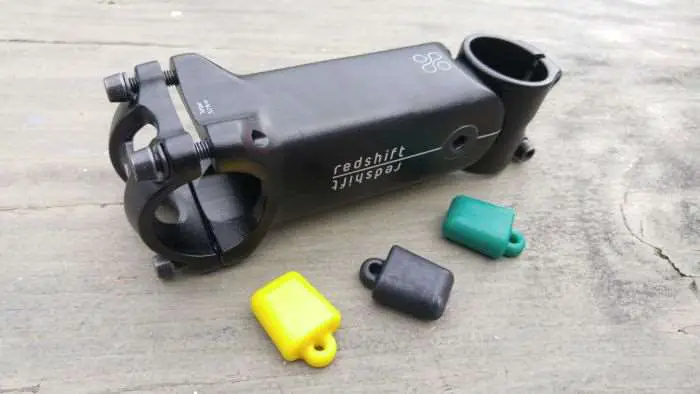
According to the blurbs on Redshift’s website, the ShockStop is described as follows:
“An adjustable-stiffness suspension stem that smooths out your ride that’s perfect for performance cyclists, recreational riders, and commuters.”
I commute from time to time, mostly to the local brewery with my lady  I participate in recreational rides and when there is a need for serious training as part of race preparation (my training isn’t really that serious), I’m about the performance cyclist angle. Outwardly, this stem may suit me!
I participate in recreational rides and when there is a need for serious training as part of race preparation (my training isn’t really that serious), I’m about the performance cyclist angle. Outwardly, this stem may suit me!
“Shock absorption that smooths the road”. “The ShockStop stem does what gloves and extra bar tape can’t: it isolates your upper body from the imperfections of the road, letting you ride further, faster, and more comfortably.”
If the photo above isn’t a clue (that’s the ShockStop stem installed), I ride without gloves. Only when it’s really cold will you catch me wearing them. So, before readers of this review jump up and down, pointing out that I may possibly be a bit mad – I prefer the feel of the bars directly, not isolated by gloves – as it is, most fingerless gloves drive me a bit up the wall. Moving on…
“The ShockStop dramatically improves the quality of your ride, without compromising steering responsiveness or detracting from the aesthetic of the bike. The subtle pivot design allows the front end of the bike to move up and down over bumps in the road while your hands follow a smoother path, cushioned by the elastomers inside the stem.”
Removal of the stem’s faceplate reveals the elastomers hidden away from view, and the wedge with accompanying bolt that keeps them in place.
The ShockStop stem ships with five elastomers, rated at varying degrees of stiffness. All are color coded and labeled for ease of identification. In a nutshell, the smaller the number, the softer the elastomer. Out of the box, the ShockStop is installed with a blue elastomer (70) and an orange elastomer (60).
According to the Redshift ShockStop stem stiffness chart pictured above, 70 / 60 falls under the category of “Average stiffness”. I’m an average type of gravel cyclist at an average weight of about 155lbs – 158lbs, so I figured I’d stick with the out-of-the-box setting for my initial rides.
On the scales, the stem weighs in at 292gm for a 110mm sample with elastomers installed. Weight weenie types could further drop the weight further by substituting the six steel fixing bolts for titanium, and possibly save another 10 – 15gm. Still, at 292gm, the stem is reasonably lightweight considering what it has been tasked with.
The First Rides
I’ll be honest here – as with all of my reviews – I found the stem had little if any vibration / dampening effect with the stock 70 / 60 elastomers. Sure, holding the bike stationary and pushing down on the brake levers results in the stem moving downwards as the elastomers resisted my effort, but actually riding, it didn’t translate to dampening I could perceive when I was riding with my hands on the tops of the handlebars.
With my hands on the brake hoods, I could feel a little vibration damping, but when the road surface gets rough, I ride with my hands on top of the handlebars. This allows the bike to float a little beneath me, as I keep light pressure on the handlebars. Perhaps others who’ve used the stem may find benefit at this level of dampening – placebo can be a marvel at times – but it wasn’t working for me.
At this point, I decided it best to temporarily down tools on the ShockStop stem review, and resume later on.
Six Months Later
Stephen Ahnert from Redshift Sports wrote an email to me, inquiring about the status of my review. I used that opportunity to discuss my concerns about my issues with the stem damping, and provide some other feedback. With my first experience using the stem way in the past, I thought it a good time to re-open the review file, but with a fresh perspective.
The first thing to change was the out-of-the-box elastomers (70 / 60). Following the easy to read instructions, I removed the stock elastomers, wedge and bolt.
Pay close attention to the instructions provided by Redshift. It is very easy to incorrectly install the elastomers, and potentially damage the wedge fixing bolt. Take your time, you’ll have no problems.
I will admit I agonized over my choice of elastomers. According to Redshift’s elastomer chart pictured earlier, a single green elastomer (80) is the next level of stiffness down from the 70/60 combination. I eschewed that choice and decided upon the 70/50 combination.
With the stem reinstalled, I stood over the bike and began the usual suspension test everyone does at their local bike shop – gripping the brake levers and pushing down on the handlebars to kick the elastomers into life. This effort resulted in a suspension setting that seemed much softer on the furthest end of the lever (think of the stem pivot as the fulcrum) that may be a bit soft when climbing out of the saddle? I had a few concerns, but riding some sweet gravel roads would be the only way to alleviate them. Time to go ride!
Pictured above is the Lynskey PRO GR 6/4 Ti gravel bike, a machine I am currently reviewing. The ShockStop stem is installed in this photo. Looking from a reasonable distance, the stem doesn’t look out of place or seem any different from a regular stem. Aesthetically, that is a good thing.
The revised elastomer settings made a big difference. The stem did a great job of helping to nullify some of the smaller bumps and variations in dirt and gravel road surfaces – what some people may think of as “buzz”. Riding through the worst sections of the rougher roads of my route (this was one of several rides where I journeyed with the ShockStop), the stem did well to absorb some of the bigger hits, but not completely – remember, it doesn’t have a lot of travel and it won’t save you from wheel destroying potholes or nasty ruts.
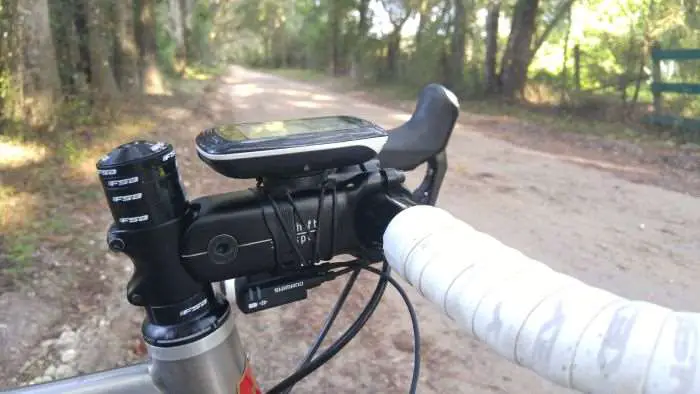
Riding on the brake hoods, the furthest point of the lever from the fulcrum, the stem performed well over the terrain I mentioned in the last paragraph. This is not a position I would ordinarily ride on rough terrain, but the Shockstop stem certainly made that riding position a little more comfortable. Sometimes there was a little too much give in the stem when I rolled over bigger obstacles in the road, but that’s to be expected considering the elastomer set I chose. Under heavy braking, you may experience a little brake dive – that’s when the handlebars are pushed down due to the forces of braking. Think of how a suspension fork on a mountain bike compresses under hard braking and you’ll understand what I’m alluding to.
Out of the saddle, making a decent pace on a small climb, the stem compressed and rebounded with my effort – it was reminiscent of a very soft tyre. During this part of the review, I was rolling Panaracer’s new Gravelking SK tyre in 650B x 1.9″ at a lowly 25psi. A certain level of cush is afforded at this pressure on these big volume tyres, but most of that up and down movement was emanating from the stem. For this reason, I don’t see the Redshift Shockstop stem as being an item that would suit every performance-minded cyclist. Eventually, I got used to the bobbing motion, but it wasn’t a sensation I liked. If you’re the type who climbs mostly in the saddle, you may still notice a bobbing motion, dependent on the stiffness of your elastomers. That said, riding up a mountain with this stem favors a smooth climbing style.
Summary
The Redshift Sports Shockstop stem certainly accomplishes what it was designed for, but, you will need to pay close attention to your choice of elastomers – and their period of “settling in”. It may take a ride or two for the elastomers to attain their final position, which may have a bearing on the suspension effect.
Would I recommend this for the high-end, performance gravel cyclist? No. In my experience, I had to run a softer setting to feel the suspension effect on top of the handlebars versus the stock out-of-the-box settings. Mind you, I may further experiment with a single 80 elastomer, which may achieve a better middle ground setting. Segueing a little, many riders question the need for suspension on gravel. There is one type of suspension people forget about which arguably is the simplest and has the most benefit – a bigger tyre casing and lower tyre pressure.

On the positive, the Shockstop stem is very simple to install and adjust, and is much cheaper and less intrusive than a fork based suspension system. It is well suited to gravel cyclists who are looking for a more comfortable ride, but not necessarily interested in all out performance. Thus, it may be a good purchase for at least 60% – 70% of the gravel cycling market. The stem will definitely appeal to riders who enjoy loaded touring and bike packing along gravel roads, or those simply out for a lovely afternoon gravel road jaunt.
The Redshift ShockStop Suspension stem is available now directly from Redshift Sports, priced at $US 139.99.


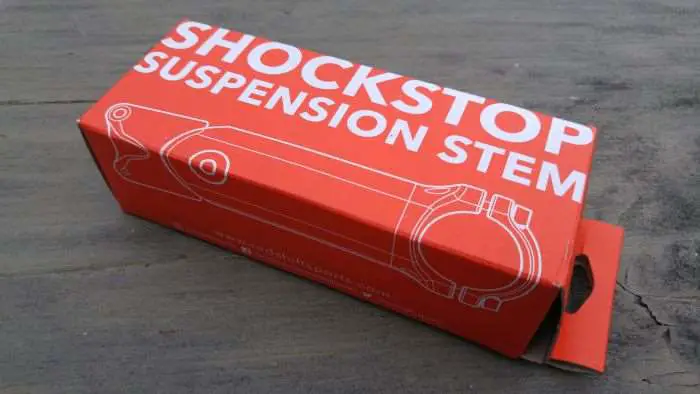
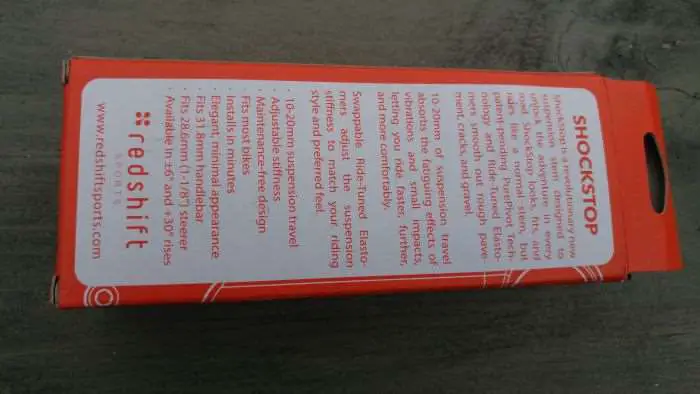
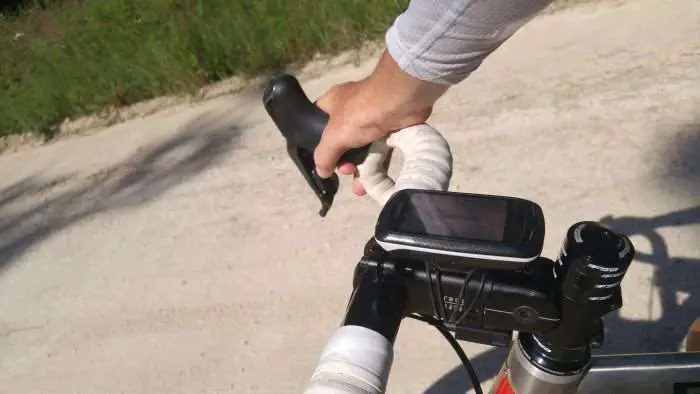
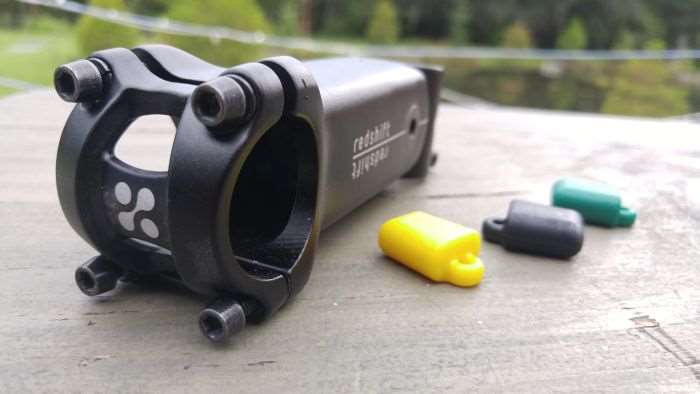
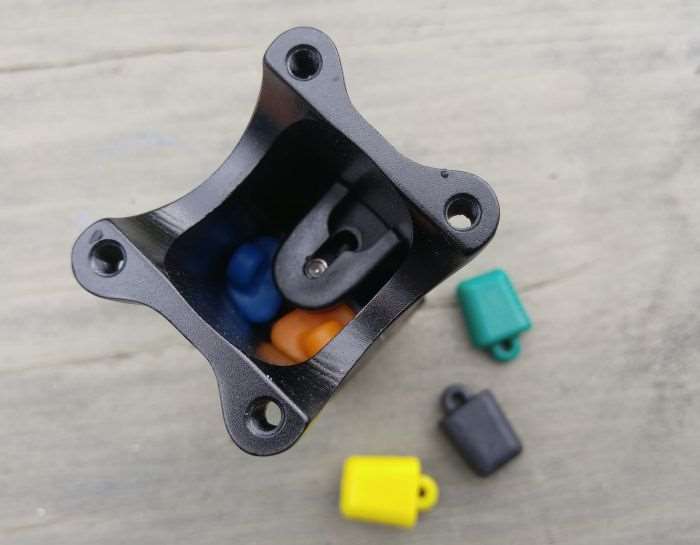

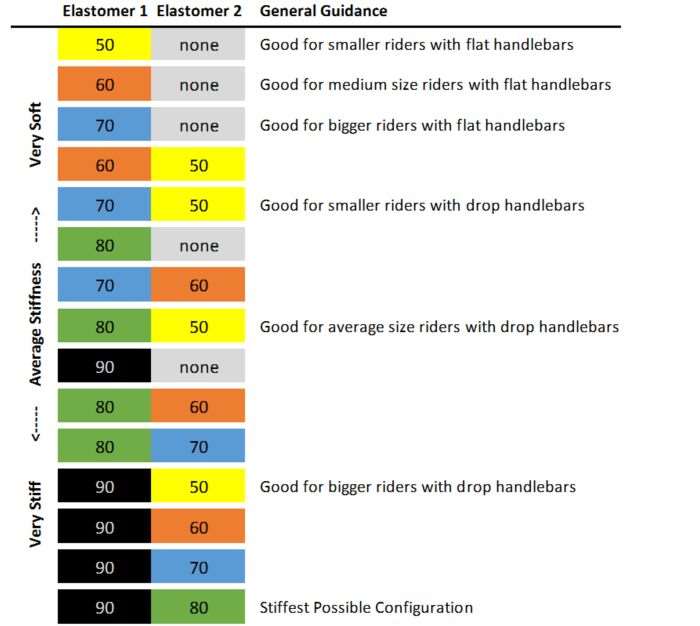

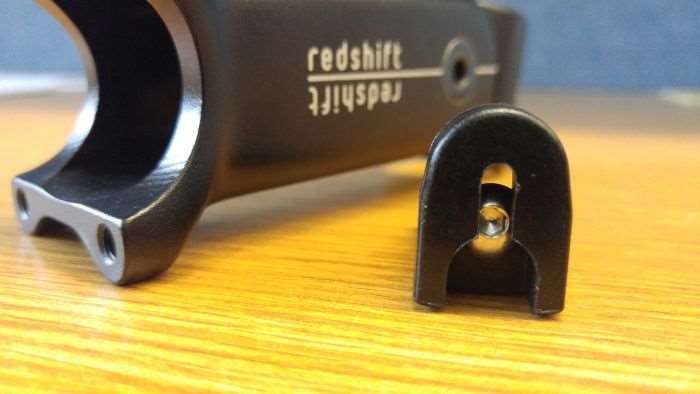
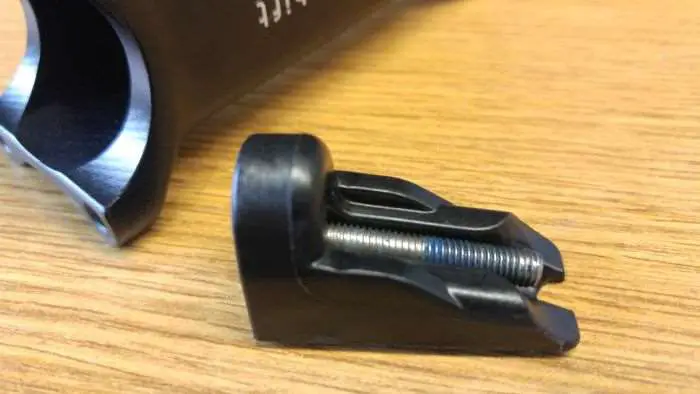
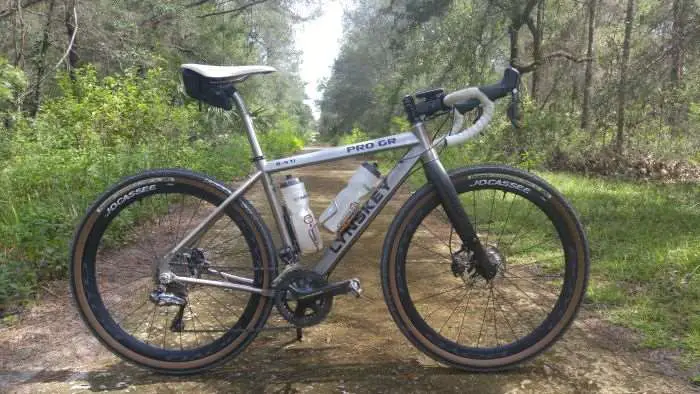
Very interesting result; I weigh the same as you, but I found that the stock 70/60 setup was a little too soft, and am currently running the 80/50 setup, but am finding it a bit firm, so I will be switching to double 70s to see how that feels, once I get my hands on a second 70.
-Ed
Thanks for the review, and very interesting to contrast it with Guitar Ted’s on ridinggravel.
Carbon forks usually have a plug inside them where you clamp the stem. If you move the stem up or down and the plug inside the fork does not line up around the area the stem clamps ,you are setting yourself up for a steer tube failure.
Nigel, the stem resides at a fixed point on the steerer tube, but I understand the point you are making. There is a pivot point on the stem – all material beyond that moves, not at the steerer tube.
My comment has nothing to do with your stem. If you adjust the clamping point of the stem on any carbon fiber steer tube I would recommend you adjust the plug inside the steer tube to line up with the stem. That plug inside the steer tube has two purposes on carbon fiber steer tube forks.
Oops… got it. Yes, spot on there Nigel. The expander plug on my bikes are appropriately positioned, but I do appreciate you mentioning this. It is definitely something not everyone pays attention to.
The change in leverage from different hand positions is a problem with single-pivot suspension stems and drop bars. Years ago I tried a Girvin FlexStem and had similar results to JOM, but noticed there was no effect when on the drops as the line of force applied there passed through the stem’s pivot – effectively giving no lever arm.
The now-defunct Softride stems reacted the same irrespective of hand position, but had other foibles.
The Shockstop stem is probably a better option for those who ride primarily in one position than for those who move around a lot.
Thanks for an honest review, something you can’t find in any cycling magazine.
Good interesting review.
I’ve been enjoying one of these since the end of May on my Grade over here in Blighty. RedShift’s setup chart recommended a 70/90 or firmer elastomers for me. Being lazy and interested in what something that wasn’t supposed to work was like I decided to give the (way too soft for me) pre-installed 70/90’s a go. Surprisingly no problems with dive, climbing in or out of saddle etc, just worked, worked well and it’s carried on working so well since then that I’ve not touched it.
I think what’s happening is that the physics, geometries and rider preferences mean that RedShift’s fit chart can’t be anything other than a starting point (that’s perhaps a bit too road biased). I suspect the best way to set the stem up is to have the elastomers just hard enough that it doesn’t sag when in a normal, non-braking, riding position with the rider leaning on the hoods … been too busy riding to try it out though 🙂
Curious if you could compare and contrast this product to the Lauf Grit.
Hi John,
Usually, I leave the readers to compare or contrast two products I have reviewed. I generally avoid comparing one product versus another, nothing personal, but thanks for the question!
Nice review Jom,
My friend rides a Stromer ST1 Platinum that came with a carbon fork, would this stem work on his bike? I read that Niger recommends adjusting the plug in the steer tube to line up with the stem, but I am not sure if the Stromer fork comes with one? I’m trying to help a buddy out that does not want to spend the big money to buy a suspension fork…
Frank, I’ve not seen a Stromer bike first hand. Your friend will need to pose the question direct to the manufacturer.
First let me start by saying I love this site, the videos and reviews. All spot on.
I am the same size and weight as JOM, and I do run this stem. Off the top of my head, I can’t tell you what elastomers I have in there now, but it I did set it up with the next setting than what was initially installed on the stem when I received it.
I did this for two reasons: 1. So I knew how to do it., and 2. I wanted it to be stiffer for climbing out of the saddle.
I also read that the elastomers may soften up after a few rides, so a stiffer setting just made sense.
I have to say, outside of the weight (it seems heavy), I love everything about this stem. I immediately noticed less vibration transmitted through the bike (2018 Orbea Terra), with no negatives on climbs or bike handling. On big hits, they are just as bad as prior to running this stem. The stem is in no ways or means a “Suspension”. It does however eliminate vibration very successfully.
Having said that, if you purchase this item with that objective, I think the majority of people will find value (if set up correctly). If however, you are looking for suspension, look elsewhere.
Thanks again JOM
I’m late to the party here; but I recently started to have wrist pain – partly due to old injuries, and partly due to riding gravel. Having had some good experience relieving lower back pain with a Kinekt Body Float seat post, I was wondering if this stem might help relieve some of the wrist pain I’ve been experiencing. I suspect that despite riding wide low pressure tires, and having a dialed in position after many years of riding and racing, a certain amount of micro vibrations are transmitted to my body which absorbs the shock and can cause pain in the hands, wrists and lower back.
It’s possible. I find the stem does in fact smooth out the ride. How much versus a normal stem I couldn’t put a figure on it.
Hopefully you’re riding carbon bars and wheels, and a compliant frame too. Tubeless? Everything will add up.
Hello, at 245 lbs, I have attempted to create a Lincoln Continental type ride. I ride an aluminum Diamondback Haanjo with both the Redshift seatpost and stem, a Brooks B17 w/cutout, and tubeless Barlow Pass 650b x 48’s, with the front on a 30mm int width MTB rim (alu) that balloons the tire to 56.5mm. I am now building a Workswell 209 with all the same stuff and am anxious to see if there is any difference in level of comfort. I am starting to believe that the frame won’t make any difference as the other components do so much shock absorption that the frame could be made of anything and no Prince or Princess, no matter how discerning, could feel the gravel pea in a blind taste test. We shall see.
What Ed said, pretty solid advice right there.
Thanks for the advice. After the positive results I got with my Body Float seat post, I may give the Redshift stem a try. Nice that they offer a 30 day free return though. It’s surprising how much higher frequency low amplitude vibration comes through the bike despite wider lower pressure tires. And, how much fatigue, pain and injury these can cause over many miles and hours in the saddle.